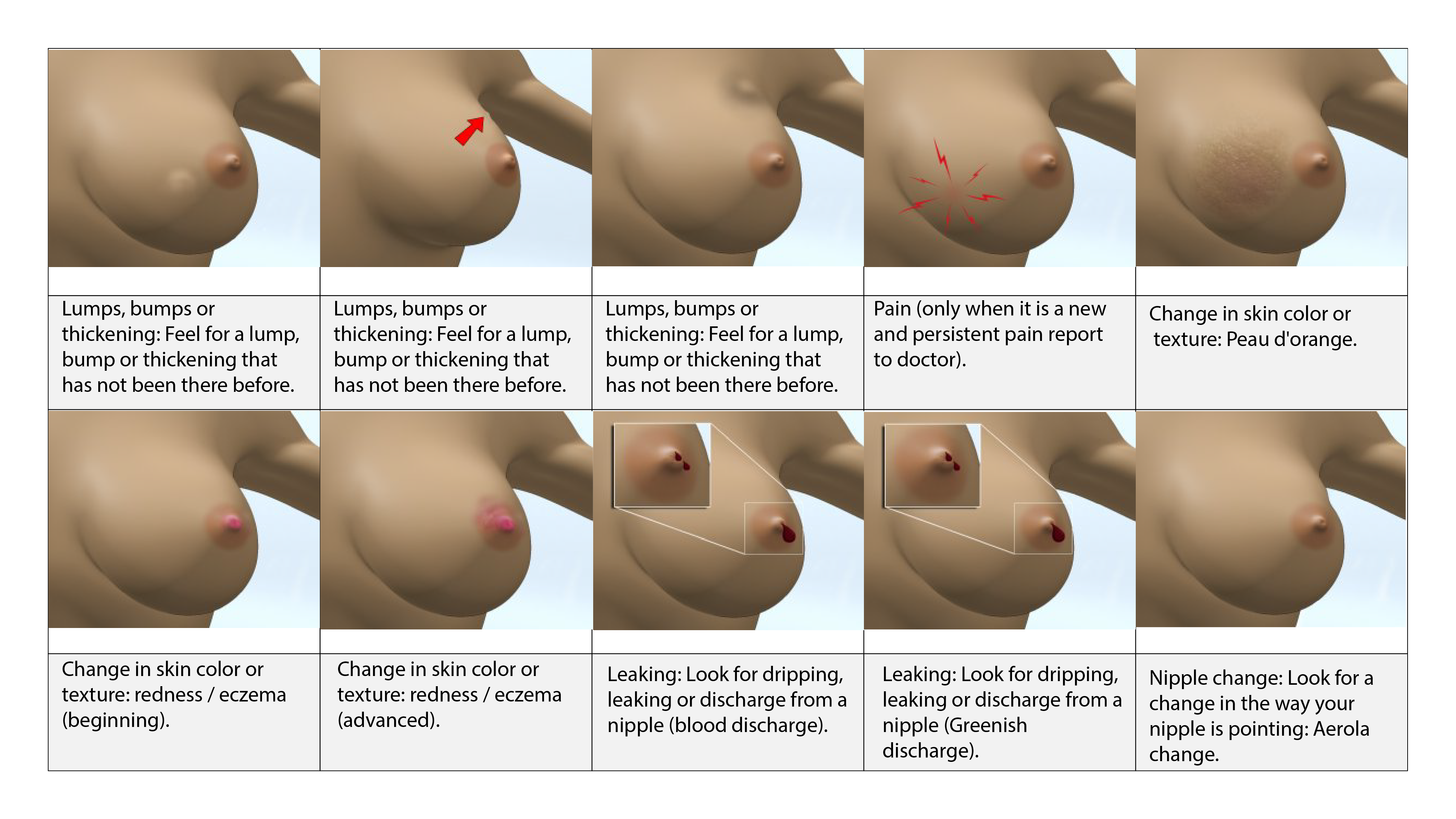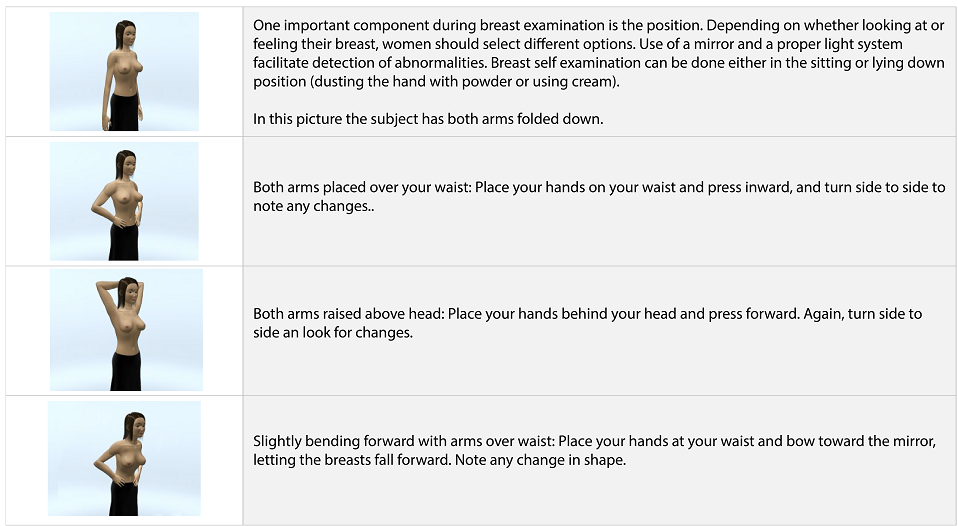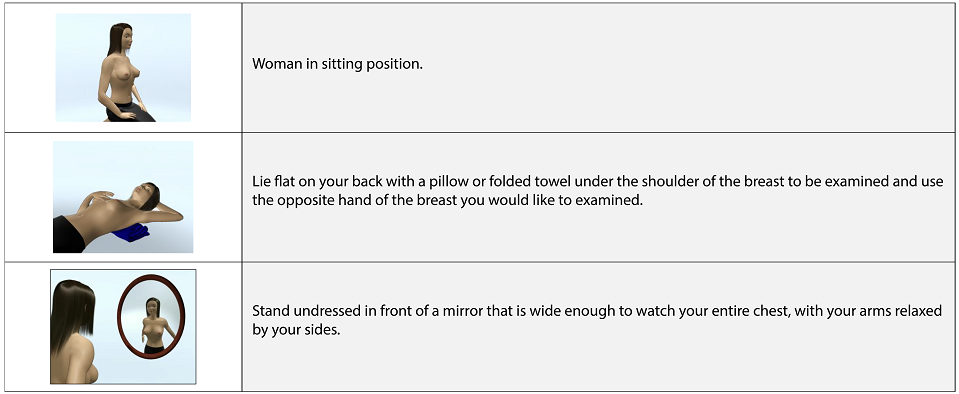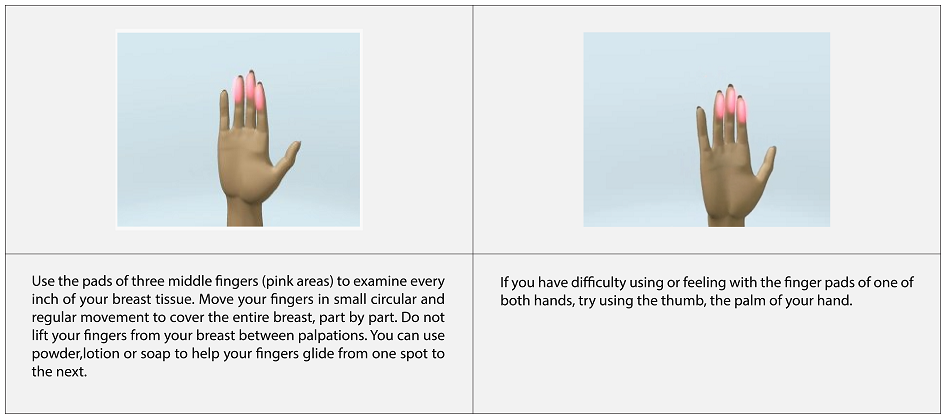Share

BREAST CANCER / BREAST SELF-EXAMINATION (BSE)
By Victoria Healthcare 20 December 2021

Breast self-examination (BSE) is a routine examination that should be carried out at the same time each month to physically check for any lumps or other changes. It entails two important components, i.e. looking and feeling. With this method, women should learn what is normal for them, so that they can recognise any changes immediately.
Though scientists have concluded that breast self examination is not an effective method of reducing mortality from breast cancer and the vast majority of changes found during breast self-examination are not cancerous, in many countries it may be the only alternative and women should be encouraged to be aware of what is normal breast and recognize changes in their breast, size, shape, skin and nipples as soon as possible by self-examination once in a month or two basis. Most of the breast lumps are detected when women take bath.
W.H.O says that National Cancer Control programmes should not recommend mass screening by breast self-examination and physical examinations of the breast. Rather, programmes should encourage breast awareness and early diagnosis of breast cancer, especially for women aged 40-69 years attending primary health care centres or hospitals for other reasons, by offering them clinical breast examinations.
- Position


2. Hand movements

3. Palpation perimeter
The examination area is bound by the line which extends down from the middle of the armpit to just beneath the breast, continues across the underside of the breast to the middle of the breast bone, then moves up and along the collar bone and back to the middle of the armpit (shaded area). Most breast cancers occur in the upper outer area of the breast.
4. Pressure level

5. Breast palpation
Use the following search pattern to examine all of your breast tissue. Be sure to palpate carefully beneath the nipple. Women who have had any breast surgery should still examine the entire area and the scar. Any scar should also be carefully examined from end to end. Start in the armpit, proceed downward to the lower boundary. Move a finger’s width toward the middle and continue palpating at upward until you reach the collarbone. Repeat until you have covered all the breast tissue. Make at least 6 strokes before the nipple and 4 strokes after the nipple. You may need between 10 and 16 strokes to cover all of your breast tissue.
Other search patterns can be used to cover the breast depending on the woman’s personal choice. First alternative is in a circular pattern second is in a triangular pattern; Full coverage of both breasts, one by one, is very important. In this picture you can see the breast palpation in circle pattern.
6. Axillary examination
7. Check for nipple discharge on nipple
Squeeze your nipples to check for discharge. Many women have a normal discharge. Nipple discharge can also be a sign of a breast problem. Look for discharge in your bra or clothing. Report any discharge to your physician.
8. Breat abnormalities

Source: https://screening.iarc.fr/breastselfexamination.php


